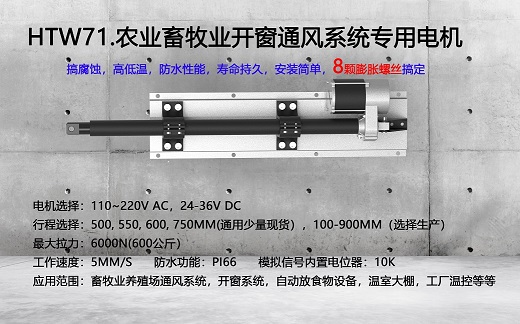 Linear actuators provide important functions for a range of medical equipment such as medical beds, operating tables and dental chairs. A linear actuator is a mechanical device that converts energy into linear motion based on the application to lift, tilt, or move the mechanical feet. The basic components of a linear actuator include a motor, gear set and screws.
Linear actuators provide important functions for a range of medical equipment such as medical beds, operating tables and dental chairs. A linear actuator is a mechanical device that converts energy into linear motion based on the application to lift, tilt, or move the mechanical feet. The basic components of a linear actuator include a motor, gear set and screws.Linear actuators are driven by ball screws or trapezoidal screws. However, due to the need for brakes, ball screw driven actuators are often not selected for medical applications. Instead, most medical device designers prefer trapezoidal leads because they can carry large loads at low speeds without installing brakes. Depending on the application, the linear actuator can be operated via a foot switch or a hand-held suspension.
Unlike other industries, designers of medical devices using linear actuators must pay special attention to the human factors of the device. For example, linear actuators usually work at low voltages from 12V to 36V. The linear actuator runs at a low speed to ensure that the patient is not pushed or dropped. Linear actuators are also designed to operate at a lower volume, typically less than 28 decibels, so noise does not disturb the patient.
Due to these applications, accuracy is not a major issue. The main function of their device is to safely move the patient so that doctors can easily observe it.
When selecting a linear actuator for medical equipment, consider the following steps:
load
First, find the required load capacity. It depends on the size of the device. The load capacity of a single linear actuator can range from 100 to 9,000 Newtons. For example, medical beds are designed to help lift patients who may be too heavy for a nurse, so designers must consider the weight that will be supported on the machine.
speed
Next, choose an actuation speed, given in inches per second or inches per minute. Although the actuator's speed range is wide, medical designers may choose lower speeds that do not require a braking system.
Voltage
After determining the speed, select an operating voltage. Low-voltage equipment may be preferable because higher voltages put patients at risk of electric shock.
Dimensions
Finally, calculate the necessary size space that the machine will fit to make the linear actuator fit and run smoothly.
In addition to versatility, linear actuators have many other advantages. For example, depending on the version, engineers often report that linear actuators are durable, independent, cost-effective, and reusable.

 Product
Product Industrial Use
Industrial Use Furniture & medical Use
Furniture & medical Use PV Drive
PV Drive Collaborative Robots
Collaborative Robots Technical Support
Technical Support About us
About us Culture
Culture Milestone
Milestone Responsibility
Responsibility Contact Us
Contact Us News and Events
News and Events Global agents
Global agents Certificate
Certificate GeMinG
GeMinG English
English



